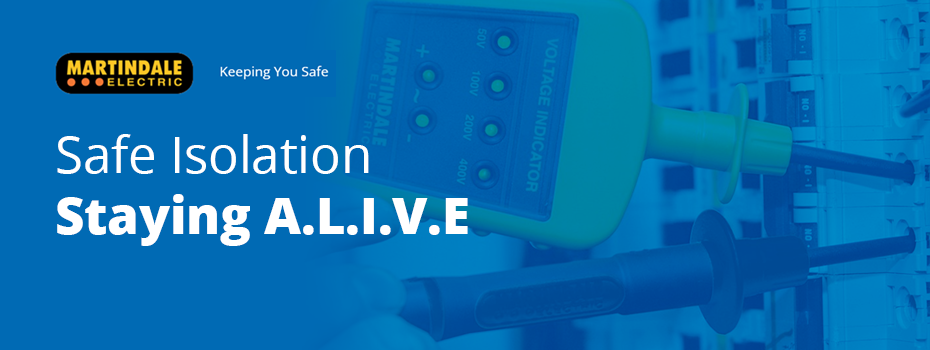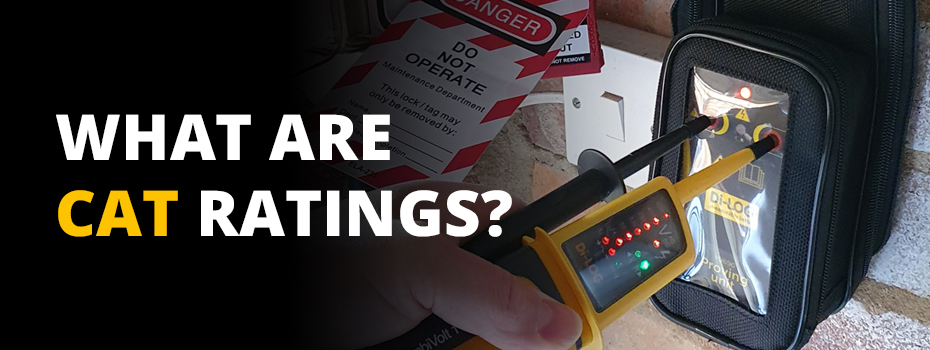 It has been sixteen years since Michael Adamson, an experienced 26-year-old electrician, tragically died after cutting a cable marked “NOT IN USE”. The cable had been wired into a distribution board and was not safely isolated; Michael suffered a fatal electric shock. Over the years, leading bodies, such as the Electrical Safety Roundtable, have worked to develop procedures and protocols designed to prevent injuries and fatalities caused by a lack of safe isolation. Now, Martindale has developed an easy-to-follow and memorable safe isolation process: A.L.I.V.E.[1]
Continue reading →
It has been sixteen years since Michael Adamson, an experienced 26-year-old electrician, tragically died after cutting a cable marked “NOT IN USE”. The cable had been wired into a distribution board and was not safely isolated; Michael suffered a fatal electric shock. Over the years, leading bodies, such as the Electrical Safety Roundtable, have worked to develop procedures and protocols designed to prevent injuries and fatalities caused by a lack of safe isolation. Now, Martindale has developed an easy-to-follow and memorable safe isolation process: A.L.I.V.E.[1]
Continue reading →lockout/tagout
-
Safe Isolation: Staying A.L.I.V.E
 It has been sixteen years since Michael Adamson, an experienced 26-year-old electrician, tragically died after cutting a cable marked “NOT IN USE”. The cable had been wired into a distribution board and was not safely isolated; Michael suffered a fatal electric shock. Over the years, leading bodies, such as the Electrical Safety Roundtable, have worked to develop procedures and protocols designed to prevent injuries and fatalities caused by a lack of safe isolation. Now, Martindale has developed an easy-to-follow and memorable safe isolation process: A.L.I.V.E.[1]
Continue reading →
It has been sixteen years since Michael Adamson, an experienced 26-year-old electrician, tragically died after cutting a cable marked “NOT IN USE”. The cable had been wired into a distribution board and was not safely isolated; Michael suffered a fatal electric shock. Over the years, leading bodies, such as the Electrical Safety Roundtable, have worked to develop procedures and protocols designed to prevent injuries and fatalities caused by a lack of safe isolation. Now, Martindale has developed an easy-to-follow and memorable safe isolation process: A.L.I.V.E.[1]
Continue reading → -
What Are CAT Ratings?
 In summary, CAT ratings are overvoltage categories; they are safety ratings that indicate the types of electrical environments in which test and measurement instruments can be safely used. Understanding these categories is crucial to ensuring that you select the correct tool when working on an electrical installation.[1]
Continue reading →
In summary, CAT ratings are overvoltage categories; they are safety ratings that indicate the types of electrical environments in which test and measurement instruments can be safely used. Understanding these categories is crucial to ensuring that you select the correct tool when working on an electrical installation.[1]
Continue reading → -
Safety Lockout Awareness Saves Hefty Fines
The Health and Safety Executive (HSE) abounds in cases of injury, and in some case death, to workers as a result of negligence on the part of employers to ensure adequate safety. Only as recently as November 2013, the HSE fined an employer after an electrician suffered burns to his face, hands and arms while carrying out live electrical testing in December 2010. Continue reading →
Page
Previous
Page 1 of 1
Page
Next


